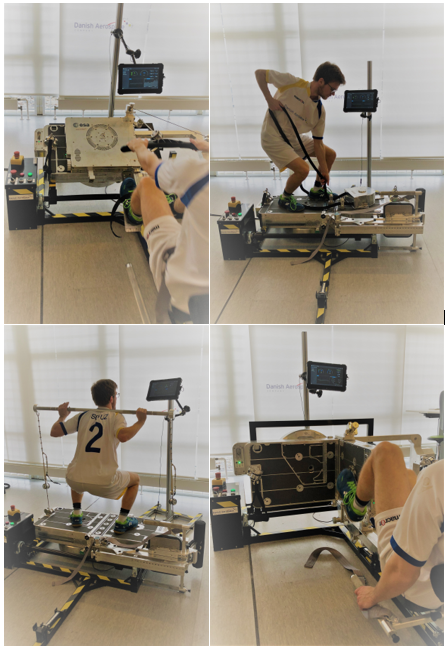|
ESA has just extended its contract with Danish Aerospace Company A/S for the newly developed E4D-crosstrainer. The first flight model for ISS is expected to launch in 2023. |
|||
|
It is not without reason that they again are all smiles at Danish Aerospace Company A/S (DAC) in Odense. The ink has barely dried on the latest FERGO contract with NASA, when CEO Thomas A. E. Andersen once again makes a grab for the pen. DAC has yesterday signed and an extended and prolonged contract with ESA for the company’s newly developed E4D multifunction exercise equipment which, in the future, will benefit astronauts on manned space travel. |
|||
|
E4D stands for Enhanced European Exploration Exercise Devices and has been developed by Danish Aerospace Company’s talented team of engineers. The equipment has multiple exercise functions, which will give the astronauts a more varied workout in space as E4D combines cycling, weightlifting, rowing and rope pulling in one machine. The E4D cross-trainer will become a vital part of the astronauts daily training as it gives them a complete workout and more variation when the astronauts have to exercise at least 2 hours a day. |
||
|
”We are delighted that ESA has expanded on and prolonged the contract, as it adds extra functions to the equipment, as well as gives us the opportunity to supply additional software tools, which makes it more user-friendly for NASA and ESA’s specialists. E4D and its multifunction elements have already generated great interest, not only with NASA and ESA, but also with private companies working with the commercial side of manned space travel. This demonstrates that E4D is creating a unique foundation for future business potential within this field.” States Thomas A. E. Andersen CEO of Danish Aerospace Company A/S |
|||
|
The new contract with ESA has both been expanded and prolonged with regard to developmental activities. The equipment must now meet a long list of additional requirements and include additional functions, supplemented with numerous specific software tools, whose goals are to make it more user-friendly for NASA and ESA’s flight surgeons and health specialists. NASA and ESA will test E4D on the International space station for 2-3 years after expected launch in 2023. The expansion and prolongation of the contract is expected to run till 2025. The value is estimated at MDKK 4,1 and is a 16% increase of the contract value. ”I am very proud of this equipment which our creative engineers designed. It will be something completely unique within exercise equipment for astronauts and feature, among other things, a new type of exercise, rope pulling, which has never-before been used in space. Variation in exercise is incredibly important for astronauts, so that many different muscle groups are continually used during their stay in space and furthermore, to give them variety to keep their motivation. E.g., a trip to Mars can take 6 to 8 months, so great exercise variety to pass the time is very essential.” says Thomas A. E. Andersen, CEO of Danish Aerospace Company A/S. The E4D prototype was evaluated for 7 weeks in the fall of 2019 by a panel of 14 experienced astronauts from NASA, ESA and the Japanese space organization JAXA, among others. Compared with equipment from an American competitor, however, it was unanimously decided to continue development on the E4D from Odense, Denmark. |
|||
|
For further information: Thomas A. E. Andersen, CEO, Danish Aerospace Company A/S Cell phone: +45 40 29 41 62, Email: This email address is being protected from spambots. You need JavaScript enabled to view it. |
|||


